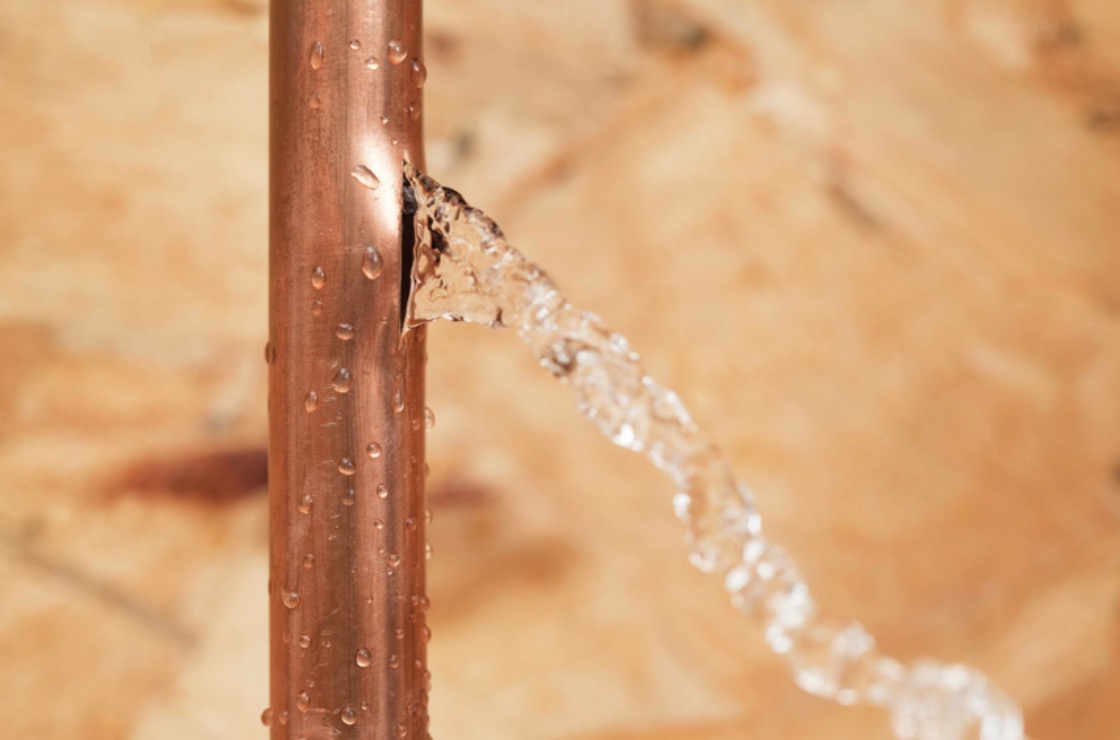Your Residential Primary Typical Leak Factors: Examination
Your Residential Primary Typical Leak Factors: Examination
Blog Article
Are you looking for critical info on Most Common Causes of Leaky Pipes?

Leaks not only trigger waste of water but can also trigger unneeded damages to your residence and also promote unwanted organic growth. Regrettably, water leakages might go unnoticed because the majority of the pipework in our home is hidden. By understanding and looking for daily situations that create leakages, you can safeguard your home from future leaks as well as unnecessary damages. Today, we will certainly consider 6 leak triggers that might be causing your pipes to leak.
Immediate temperature level changes.
Severe temperature adjustments in our pipes can create them to broaden and also acquire suddenly. This growth and contraction might trigger splits in the pipelines, especially if the temperature level are below freezing. If you maintained an eye on just how your plumbing works, it would be best. The visibility of the previously stated scenarios regularly indicates a high threat.
Rusty water supply
As time goes by, your plumbing system ages and also deterioration such as corrosion might begin gnawing the pipes. This may be the source of staining or warping on your pipes. This asks for an evaluation with your plumber quickly. If our plumbing system is old, take into consideration changing the pipes because they go to a greater risk of corrosion than the more recent models.
Faulty Pipe Joints
Pipe joints can deteriorate over time, resulting in water leaks. If you have noisy pipes that make ticking or banging sounds, specifically when the warm water is turned on, your pipeline joints are possibly under a great deal of pressure.
Encroaching roots
The majority of water leaks begin outside the house instead of inside it. If you notice an abrupt decrease in water stress, claim in your faucet, take some time to head out and analyze your backyard. You may discover damp patches or sinkholes in your backyard, and that might suggest that tree origins are invading water lines creating water to seep out. You can have your plumber look for breach, specifically if you have trees or bushes near your home.
Poor Water Connectors
Sometimes, a leakage can be brought on by loose pipes as well as pipelines that supply your home appliances. Typically, moving is what causes the loosened water Connections. You may discover when it comes to a washing equipment, a hose pipe may spring a leakage because of drinking during the spin cycle. In case of a water links leakage, you may notice water running straight from the supply line or puddles around your home appliances.
Obstructed Drains
Clogged drains may be irritating as well as inconveniencing, however they can often wind up creating an overflow resulting in rupture pipes. Keep removing any materials that might decrease your drains that can block them to stay clear of such troubles.
All the above are sources of leakages however not all water leaks arise from plumbing leaks; some leaks could originate from roofing leaks. All leaks must be fixed immediately to stay clear of water damage.
Leakages not only cause waste of water however can likewise cause unneeded damages to your residence as well as promote undesirable natural growth. By looking and also recognizing for day-to-day situations that cause leakages, you can protect your residence from future leaks and also unnecessary damage. Today, we will certainly look at six leak creates that might be causing your pipelines to drip.
At times, a leak can be caused by loosened hose pipes and also pipelines that provide your devices. In instance of a water connections leakage, you may discover water running directly from the supply line or pools around your devices.
How To Check For Water Leak In Your Home
How To Check for Leaks
The average household's leaks can account for nearly 10,000 gallons of water wasted every year and ten percent of homes have leaks that waste 90 gallons or more per day. Common types of leaks found in the home are worn toilet flappers, dripping faucets, and other leaking valves. These types of leaks are often easy to fix, requiring only a few tools and hardware that can pay for themselves in water savings. Fixing easily corrected household water leaks can save homeowners about 10 percent on their water bills.
To check for leaks in your home, you first need to determine whether you're wasting water and then identify the source of the leak. Here are some tips for finding leaks:
Take a look at your water usage during a colder month, such as January or February. If a family of four exceeds 12,000 gallons per month, there are serious leaks.
Check your water meter before and after a two-hour period when no water is being used. If the meter changes at all, you probably have a leak.
Identify toilet leaks by placing a drop of food coloring in the toilet tank. If any color shows up in the bowl after 10 minutes, you have a leak. (Be sure to flush immediately after the experiment to avoid staining the tank.)
Examine faucet gaskets and pipe fittings for any water on the outside of the pipe to check for surface leaks.
Undetected water leaks can happen without the home or business owner even realizing. If you suspect a water leak, but not able to find the source. It is time to contact a professional water leak detection service, The Leak Doctor.
How To Find a Water Leak In Your Home
https://www.leakdoctor.com/blog/How-To-Check-For-Water-Leak-In-Your-Home_AE197.html

We had been guided to that editorial on How to Find Water Leaks through someone on a different domain. Loved our review? Please share it. Help somebody else check it out. Many thanks for your time. Come back soon.
Overflow? We can help! Report this page